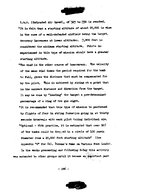GrauGeist
Generalfeldmarschall zur Luftschiff Abteilung
While the Pe-2 was a solid performer , the comparable Tu-2 had much better range.
Follow along with the video below to see how to install our site as a web app on your home screen.
Note: This feature may not be available in some browsers.
Ad: This forum contains affiliate links to products on Amazon and eBay. More information in Terms and rules
"
Even though it's kinda big the Caproni Ca.335 looks like a pretty good candidate too. Apparently there was also a more powerful dive bomber version

Caproni Ca.355 - Wikipedia
en.wikipedia.org
"
Dear /Wild Bill. About those Capronis. One of your links was to the elegant 335, fast, rangy, lousy payload. The second link was to the 355, which is the one I called a slug. And it is, the RA decided to use Ju87 instead.
Like
Quote Reply
Report
While the Pe-2 was a solid performer , the comparable Tu-2 had much better range.
An early war light bomber is going to be either limited in range or slow, pick your preference. It can have dive bombing capability but that will make it slower, too slow (until you get to the level of an Aichi B7, by which time you are in the jet age)
Dive bombing requirement does not automatically mean the aircraft is slow.
Part of what ended dive bombing for land targets was better AA guns. Obviously this varied from air force to air force depending on the opposition and also varied a lot from year to year.
Navies hung on bit longer, but navy targets were usually higher value and worth more losses.
Fighter bombers took over because they were harder targets to hit by AA even though they weren't as accurate. But trading a tank or pill box or artillery piece for a dive bomber was often not a good trade.
I think what ultimately ended dive bombers for land warfare was this issue of making them fast, combined with the fact that fighter bombers like P-40s or Corsairs or Typhoons or Fw-190s could do shallow angle dive bombing and hit targets a lot better / more often than medium to high altitude level bombers could, but still survive a strike.

P-40s and Corsairs were used as dive-bombers, the Corsairs using the extended U/C as dive brakes.
P-47s were also used as dive bombers as-is, deemed successful by the USAAF. Steep angles, no dive brakes:
View attachment 694823
Where exactly is the angle of the dive specified on the posted page?Steep but not, from what I understand, dive-bomber steep. It's called 'shallow angle dive bombing'. More accurate but not the same as say, what a Stuka does.
The Battle kinda was intended to do that and it wasn't capable of it.
Where exactly is the angle of the dive specified on the posted page?
Text is specific about P-47s, in ETO.
See here for 90 deg dive bombing by P-47:
View attachment 694996
1944? The part of the doc has no date IIRC.Wow, fascinating, I stand corrected. Sounds like they worked it out. Do you know the date of this memo?
What ended dive bombing was -
The radar guided director that could accurately track aircraft with fast changing bearings in all three axis. A dive bomber was a very hard target for regular directors.
The VT shell.
Reliable stand off anti ships weapons.